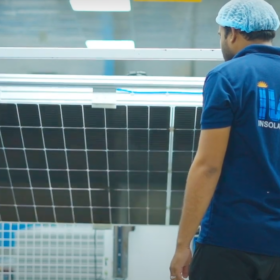As the world moves closer to cleantech 2.0 and the transition towards eco-friendly energy storage gains momentum, the need of the hour is credible energy storage technology covering both stationary and mobility storage landscapes. Positive energy storage adoption is fundamental to changing course in the energy storage market, governed by the ease of use, cost-effectiveness, and practical aspects like safety, scalability, and component manufacturing.
Innovative solutions
Energy storage has a key role in the transition toward clean energy. The energy storage market must focus on reliability and resilience in the wake of the ever-growing list of countries aiming at net-zero emissions. Despite falling battery prices, grids struggle to meet energy supply amidst the increasing demand. Modern technologies have paved the way for smart meters, changing how electricity is used. Efficient energy storage harbingers the revolutionization of power generation and delivery.
According to BloombergNEF (BNEF), energy storage installations globally will reach a cumulative 358 GW capacity by 2030. With net-zero commitments being executed worldwide, renewable energy will account for 80-90% of global electricity production by 2050. Robust energy storage technologies can help facilitate a smooth transition towards renewable energy, providing commercially scalable and sustainable solutions.
Energy shifting is another important factor. For utilities and grid-scale operators, viable energy storage closes the gap in the variable output of solar/wind plants, preventing surplus power production and helping maintain the reliability of the electrical system.
BloombergNEF forecasts 55% of energy storage deployment by 2030 will be to provide energy shifting (for instance, storing solar or wind to release later). The stakeholders’ ability to store and discharge electricity of their own accord maximizes the management of power flows, thereby boosting revenues. Transforming the energy storage market through advanced battery storage energy systems will allow affordable energy leveraging businesses to reduce operating costs.
A strong commitment to energy storage market transformation will necessitate a transition to renewables, efficient electrification, grid flexibility, functional electrical vehicle charging, and evolving battery storage technologies, leading to large-scale socioeconomic development.
Mapping current battery storage solutions
Battery storage has dominated the market in both stationary and mobile applications for energy storage. These offer grid stability by addressing variability in renewable energy resources. The current battery landscape has Lithium-ion technology as the undefeated king. Li-ion battery technology spans 60% of global energy storage. Energy storage is estimated to grow into a $50-100 billion market by 2025.
However, Li-ion battery adoption faces an unstable supply chain and safety concerns. Usage of Lithium-ion is implausible in certain markets, such as dense urban areas, where factors like overheating and fire regulations limit its applicability. Further, puncture and leakage accentuate its safety concerns.
Li-ion battery uptake is also limited by the extraction of raw materials such as nickel, graphite, and cobalt, raising the cost of the supply chain. Geopolitical issues govern such extraction. Automotive OEMs depend on mining and metal companies to extract battery raw materials, constraining the supply chain.
The unfolding energy storage transformation across sectors has also brought the flow battery technology to the fore. Its long-duration energy output, coupled with low-level degradation of components in utility-scale deployments, makes it ideal for the current energy storage market. But low market penetration of the flow battery technology curtails its commercialization.
The need of the hour is new storage technologies and battery materials, overcoming the limitations of the current battery technologies. Consequently, many new battery technologies have been developed to provide cheaper energy storage, though these are far from successful commercialization.
Energy storage mix
Rapid scaling up of energy storage systems will be critical to addressing the hour‐to‐hour variability of wind and solar PV, especially as their share in electricity generation increases rapidly. Meeting the needs for flexibility while decarbonizing electricity generation is a central challenge for the power sector, so all sources of flexibility, including power plants, grids, demand‐side response and storage, need to be tapped.
Recent evidence shows that spillover effects are already strong. EV battery manufacturers aim to continually develop batteries with greater energy density to reduce upfront costs and increase EV range, but this has little impact on stationary applications, for which size and weight are secondary considerations. Therefore, as supply chains advance to the next higher-performing blend or chemistry, technology that may become less attractive for EVs can be deployed at a lower cost for stationary applications on the grid.
For example, lithium iron phosphate batteries are being increasingly favored for grid-scale installations, particularly in China. These batteries offer greater safety, lower cost, and higher durability than nickel-manganese-cobalt chemistries, which dominate the EV market. Their lack of reliance on cobalt and nickel also makes them favorable from the perspective of critical mineral supply.
New battery chemistries
Ensuring pragmatic energy storage transformation is proportional to tweaking the current battery storage chemistry. Zinc battery technology is gaining traction, changing the prevailing energy storage dynamics. To develop a unique technology that ensures safety, high-availability, non-toxic raw materials are paramount.
The zinc battery market is rapidly growing and is predicted to register a CAGR of 25.65% over the five-year period 2022-27. Ergo, there are two critical points that the energy storage market has realized:
- Lithium is not the only solution, as alternative chemistries are driving better cost efficiencies.
- Mere effectiveness is not essential, the sustainability aspect of technology can drive a much deeper and long-term impact.
A disruptive chemistry in zinc battery technology must ensure five important vectors for efficient energy storage: sustainability, availability, safety, price, and performance. Applicating the zinc technology prioritizing the user base is imperative. For example, batteries required for renewable energy storage versus batteries in EVs have different requirements. Some applications need higher charging speed from a battery performance standpoint, while others need better life or better thermal stability. This is where deep science-backed zinc technology can come handy. Modularity obtained by prioritizing charging speed versus temperature stability versus energy density is a pressing need.
There is a close link between sustainability and cost-effectiveness. A battery’s performance varies due to fluctuating weather conditions. This increases maintenance, adding up to the overall operational cost of the battery, and subsequently decreasing the capital returns on investment. Designing a battery that uses globally available materials, is easy to manufacture, and leverages the existing modular infrastructure for Lithium-ion will ensure commercial viability and success.
In conclusion
Backed by pathbreaking technologies, the energy storage market will rapidly expand from hereon. The rightful investment must pool in new resources and novel technologies, emphasizing zinc battery technology as an alternative to conventional energy storage. Undoubtedly, as the world moves towards renewable energy storage, the need for high-performance batteries that are non-toxic and contain easily sourced raw materials will become indispensable.
The views and opinions expressed in this article are the author’s own, and do not necessarily reflect those held by pv magazine.
This content is protected by copyright and may not be reused. If you want to cooperate with us and would like to reuse some of our content, please contact: editors@pv-magazine.com.








By submitting this form you agree to pv magazine using your data for the purposes of publishing your comment.
Your personal data will only be disclosed or otherwise transmitted to third parties for the purposes of spam filtering or if this is necessary for technical maintenance of the website. Any other transfer to third parties will not take place unless this is justified on the basis of applicable data protection regulations or if pv magazine is legally obliged to do so.
You may revoke this consent at any time with effect for the future, in which case your personal data will be deleted immediately. Otherwise, your data will be deleted if pv magazine has processed your request or the purpose of data storage is fulfilled.
Further information on data privacy can be found in our Data Protection Policy.